Time Management Plan | How To Create a Time Management Plan?

An effective time management plan serves as the compass guiding individuals through the maze of daily tasks, allowing them to make the most out of the limited hours in a day.
Time is the common denominator for everyone, and a well-thought-out plan ensures its intentional and strategic allocation.
By fostering a disciplined approach to time, individuals can enhance productivity, achieve goals, and experience a sense of satisfaction in both personal and professional spheres.
It’s important to understand the intricacies of crafting a comprehensive time management plan, offering valuable insights on what constitutes an effective plan and why it is an indispensable tool in the arsenal of individuals striving for efficiency and success.
Top three issues that an effective time management plan solves for employees are,
Increased Productivity: A well-crafted time management plan enables employees to prioritize tasks, ensuring that important assignments are completed efficiently.
Reduced Stress Levels: The burden of impending deadlines and overwhelming workloads can lead to stress and burnout.
An effective time management plan empowers employees to organize their workflow, reducing stress by clarifying tasks and deadlines.
Improved Work-Life Balance: Striking a balance between professional and personal life is a common challenge.
A thoughtfully designed time management plan allows employees to allocate time for work, family, and personal pursuits, fostering a healthier work-life equilibrium.
Try Buddy Punch For Free
| What Is Time Management? |
| Time management is about making conscious decisions regarding investing time and recognizing that time is a valuable and finite resource. It involves the strategic planning, organization, and prioritization of tasks to ensure the most efficient allocation of the limited daily hours. |
What Is a Time Management Plan?

A time management plan is a personalized roadmap, outlining tasks, setting priorities, and allocating time to various activities.
A time management plan is crucial for enhancing productivity and achieving personal and professional goals.
By incorporating a well-organized to-do list, individuals can prioritize important tasks and allocate the right amount of time to each.
Having a strategic approach helps in completing tasks efficiently, ensuring that there is enough time for both work and personal activities.
Developing good time management skills involves the smart utilization of time limits, setting specific tasks within a workday, and avoiding distractions such as excessive use of social media.
By adhering to a time management plan, individuals can optimize their daily routines, enabling them to complete tasks in less time while maintaining a healthy work-life balance.
A key aspect of effective time management is recognizing the importance of specific tasks and allocating the appropriate amount of time to each one.
This not only ensures the completion of essential responsibilities but also allows individuals to make the most of their time, leading to increased productivity and a sense of accomplishment.
The world is getting fast paced, where time is often a limited resource, embracing a structured time management plan becomes increasingly vital. It encourages individuals to work smarter, set realistic goals, and maximize productivity within the constraints of a busy schedule.
Regularly reviewing and adjusting the plan as needed ensures adaptability and continued success in managing time efficiently.
Importance Of 6 P’s In Time Management
The six principles of effective time management, often called the 6 P’s, play a vital role in shaping this plan.
Let’s delve into the importance of these principles and how they contribute to effective time management.
1. Prioritize your list
Prioritization helps you focus on what truly matters.
By identifying and ranking tasks based on their significance and deadlines, you ensure that you allocate your time and energy to the most critical activities.
2. Plan
A well-thought-out plan provides a roadmap for your tasks, allowing you to allocate time efficiently.
It helps you set clear goals, anticipate potential challenges, and establish a structured approach to your work.
Planning also enables better decision-making and reduces the likelihood of impulsive actions.
3. Play before you work
Taking breaks and engaging in leisure activities before tackling demanding tasks can have positive effects on productivity and creativity.
It helps refresh your mind, reduces stress, and improves overall well-being.
The play aspect ensures that you approach work with a rejuvenated and focused mindset.
4. Procrastinate no more
Procrastination can be a major hindrance to effective time management.
Addressing tasks promptly helps prevent the accumulation of unfinished work and the associated stress.
Overcoming procrastination involves developing discipline, building good habits, and maintaining a sense of urgency in completing tasks.
5. Perfectionism and letting go
Striving for perfection in every task can be time-consuming and counterproductive.
Understanding when to let go and accept a task as “good enough” is crucial for efficiency.
Perfectionism can lead to unnecessary delays, and learning to prioritize tasks based on their importance allows you to allocate time more wisely.
6. Passion Project time
Allocating time to pursue passion projects is essential for personal fulfillment and creativity.
Engaging in activities that align with your passions can contribute positively to your overall well-being and motivation.
It provides a balance to the routine tasks, fostering a sense of purpose and enthusiasm.
Buddy Punch | The Most Effective Software To Create a Time Management Plan
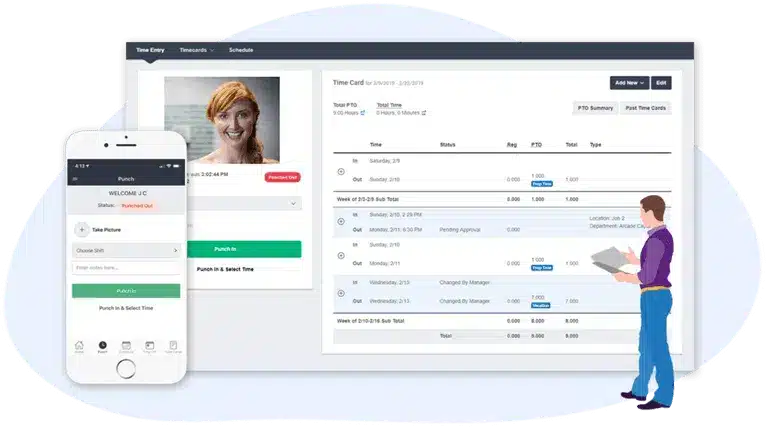
Buddy Punch is a highly effective software embraced by businesses of all sizes across diverse industries.
It streamlines the process of creating and implementing time management plans, offering a range of features that cater to the unique needs of organizations.
Buddy Punch’s user-friendly interface allows employees to clock in and out seamlessly, making it an ideal choice for office-based and remote work setups.
The tool demonstrates clear advantages over manual time tracking methods and other software solutions.
The automated nature of Buddy Punch minimizes the potential for human errors associated with manual data entry.
Thus, ensuring accurate records and saving considerable time for both employees and HR personnel.
Moreover, the software’s real-time time tracking capabilities enable supervisors to monitor work hours effortlessly, fostering transparency and accountability within the workforce.
Additionally, Buddy Punch’s reporting features offer valuable insights into employee attendance patterns, facilitating informed decision-making.
The software’s accessibility from various devices enhances convenience, allowing employees to manage their time efficiently, while the cloud-based system ensures data security and easy retrieval.
1. Time Audit
The time audit feature operates seamlessly, enabling users to log and categorize their activities effortlessly.
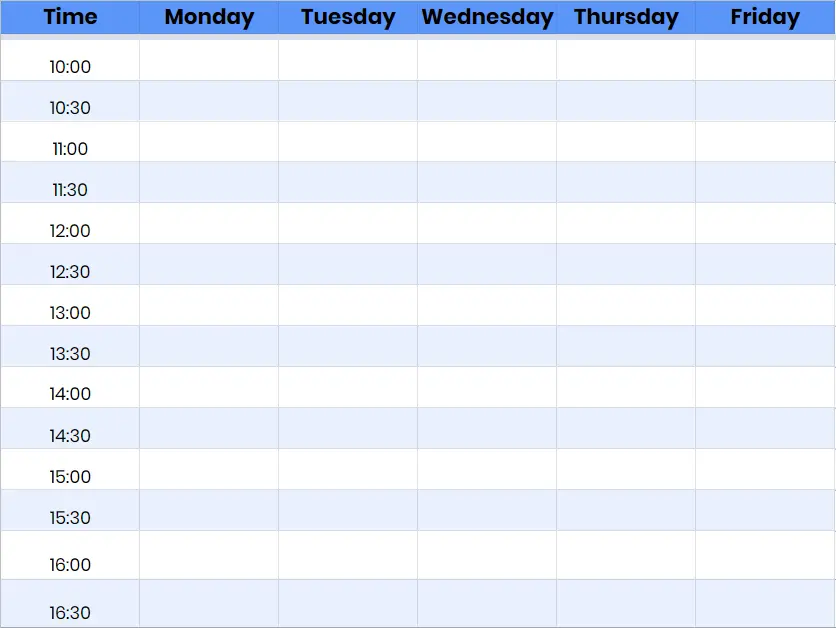
Such a comprehensive analysis promotes self-awareness and a deeper understanding of time allocation.
Whether used by individuals striving for personal efficiency or businesses aiming to enhance team productivity, Buddy Punch’s time audit empowers users to make informed decisions about time management.
With real-time tracking and reporting, this feature becomes a valuable asset in crafting effective strategies for maximizing productivity.
2. Flexible Punch Options
Flexible punch options allow businesses and employees to make various choices for recording work hours and tailoring the time tracking process to suit individual preferences and organizational needs.

Whether opting for a secure 4-digit PIN, leveraging QR codes for swift check-ins, embracing facial recognition technology, or sticking to traditional usernames and passwords, Buddy Punch ensures versatility in time-tracking methods.

4. Workflows
The workflow functionality revolutionizes how managers oversee their teams, offering streamlined processes for monitoring punches, approving time cards, and receiving notifications.

With workflows, administrators can efficiently manage multiple employees, stay informed about punches, approve time cards promptly, and customize alerts to meet specific business needs.
5. All Applications on the Go
All applications on the “Go” offer seamless accessibility and functionality across various devices, ensuring users can manage time-related tasks anytime, anywhere.
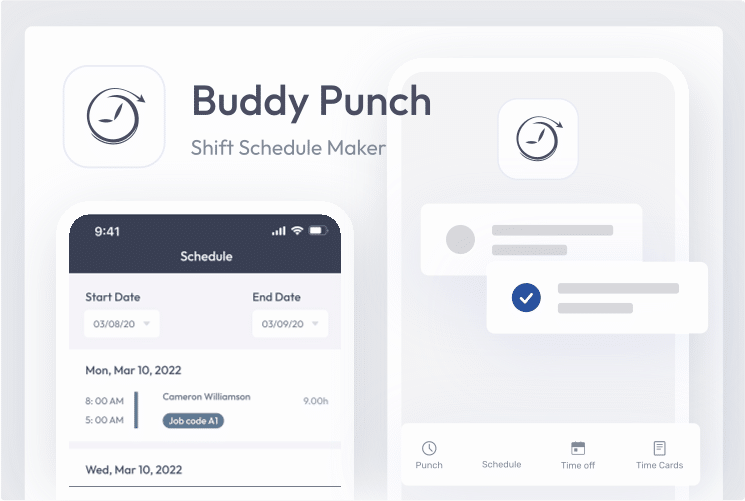
Such a diverse set of applications enables employees and managers to access the platform through mobile apps, empowering them to clock in or out, manage schedules, and track time even while moving.
6. Different Options in SSO
Different options in SSO is a pivotal feature within Buddy Punch, enhancing its reputation as a leading time management solution.
Single Sign-On (SSO) streamlines user access by providing various authentication methods tailored to organizational needs.
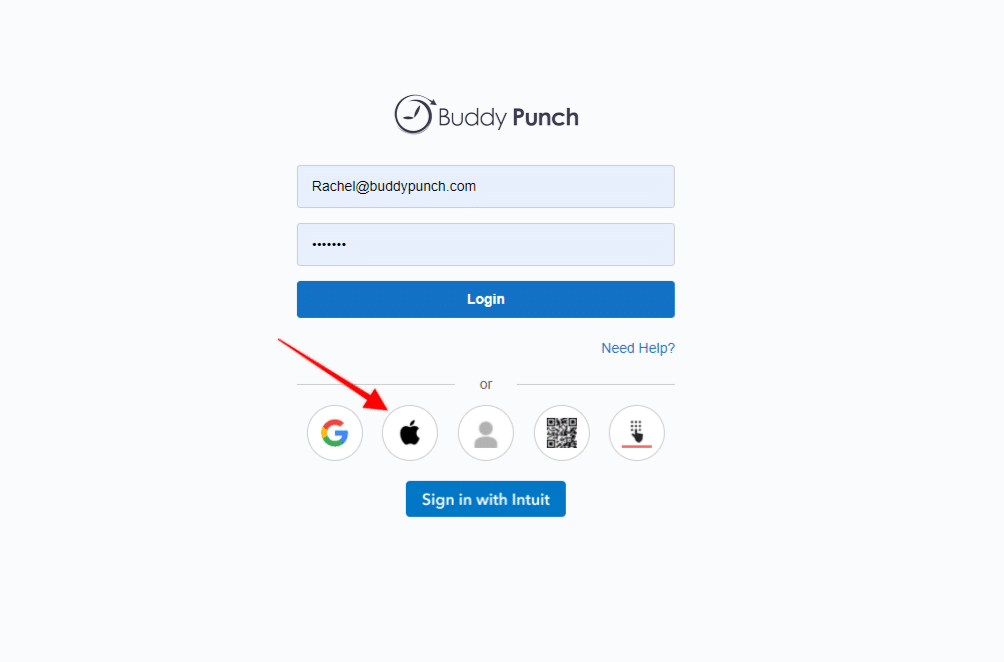
The feature offers flexibility, allowing businesses to choose from multiple SSO options like Google, Okta, and OneLogin.
With this diversity, Buddy Punch ensures compatibility with various existing systems, simplifying the login process and boosting the overall user experience.
7. Track Remote Locations
Track remote locations is a valuable functionality within Buddy Punch, solidifying its position as the most effective software for crafting a comprehensive time management plan.
The remote locations feature caters to the modern work landscape, allowing businesses to monitor and manage employee attendance, even in dispersed or remote settings.
Through GPS tracking, Buddy Punch ensures accurate records of where employees clock in and out, providing businesses real-time insights into their workforce’s locations.
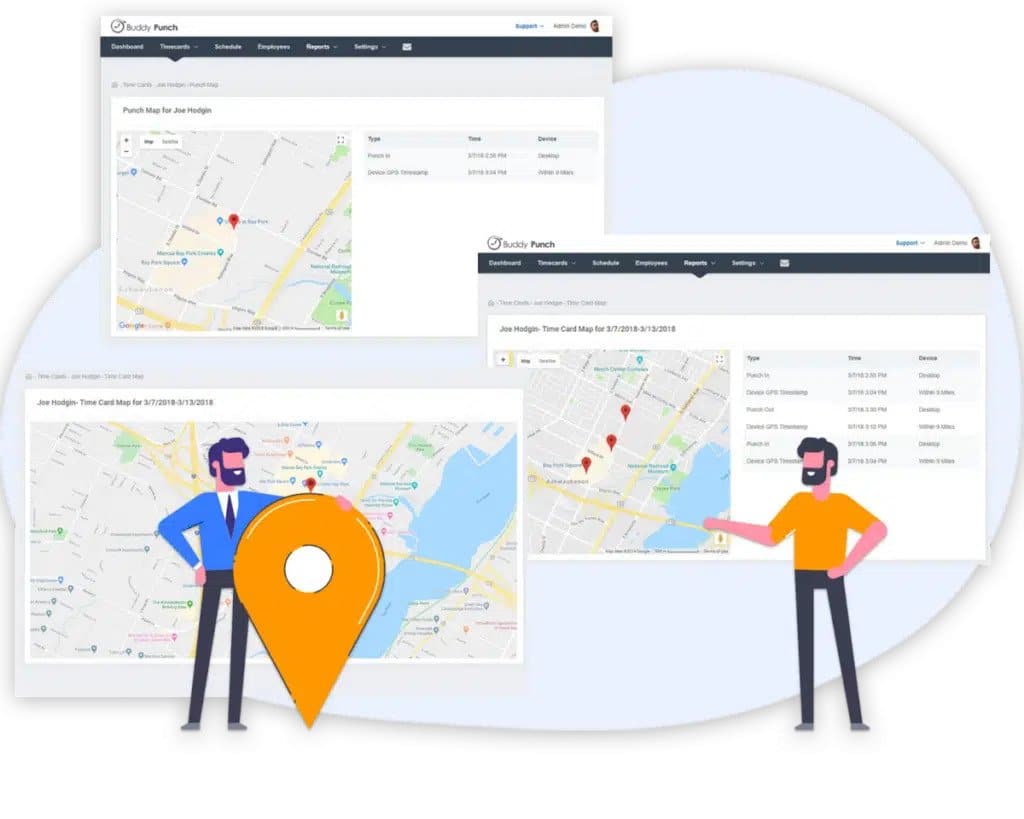
8. Text To Punch
Text to punch feature ensures that employees without a data connection can conveniently clock in or out by sending a text message, eliminating the need for a dedicated clock-in app.

Ideal for situations where a mobile app may not be accessible, this feature guarantees that employees never miss a punch, fostering a seamless and efficient time-tracking process.
9. Seamless Integrations
The integration functionality streamlines operations by effortlessly syncing employee information and time data with various platforms, including QuickBooks, Paychex, and ADP.

The seamless integration capabilities ensure a smooth and efficient workflow, allowing businesses to optimize their time-tracking processes seamlessly.
By partnering with leading providers, Buddy Punch extends its utility beyond conventional time management solutions, providing a versatile and interconnected approach to workforce management.
10. Geofences Areas
Geofences areas emerge functionality allows businesses to create designated areas where employees must clock in and out, promoting accurate time tracking.
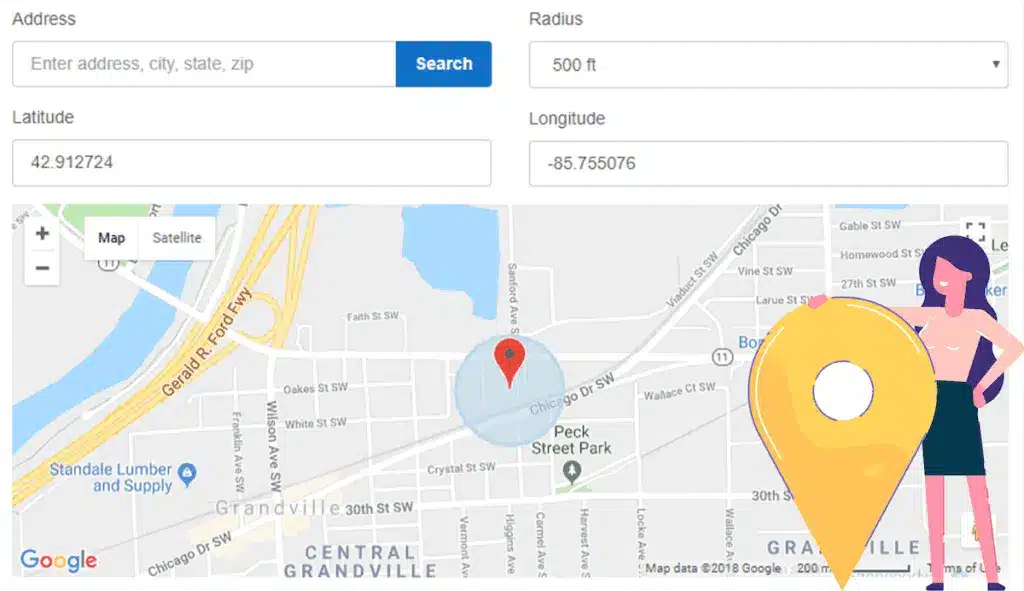
Employees can be assigned multiple geofenced areas, each linked to unique job codes, ensuring a precise record of time spent at specific locations.
With this geofencing capability, Buddy Punch enhances precision in workforce management, especially for businesses with dispersed teams or multiple job sites.
Buddy Punch’s Online Reviews
As of writing this blog post, Buddy Punch has a total of 925 total reviews with an average rating of 4.8 out of 5 on capterra.

“Great app, check in and out with accuracy, keep in contact with supervisors and can submit photos for proof of visit if not using GPS.”
Click here to read the full review.
“Delighted! As a trucking company and having resources starting their shifts at different times and in different locations it was “effort” in tying this all together to ensure everyone was being paid for correct times – doing payroll was a chore in calling and requesting and then finally imposing deadlines or you don’t get paid which pushes other things back in processing payroll… Week one of deployment -> all those issues disappeared!!! Well done Buddy Punch!!!!”
Click here to read the full review.
“We will always use buddy punch, It works for Us.”
Click here to read the full review.
Try Buddy Punch for Free
Ready to give Buddy Punch a try?
For free trial, no credit card required.
If you feel that Buddy Punch might be the right fit for your business, sign up for a 14-day free trial (no credit card needed). You can also book a one-on-one demo or view a pre-recorded demo video.
How Do You Create a Time Management Plan?
Following are the ways to create a time management plan.
1. Determine Your Goals
Setting goals provides a roadmap for your efforts, guiding you towards measurable achievements.
The initial step of goal determination involves a careful examination of your organizational objectives, ensuring that they are aligned with the overarching mission.
It is essential to allocate extra time for comprehensive goal-setting sessions to delve into the intricacies of each objective.
Whether you focus on optimizing productivity, refining payroll processes, or implementing flexible punch options, a clear understanding of your goals is crucial.
Team members play a pivotal role in this process, as collaborative discussions enhance goal clarity and foster a sense of shared responsibility.
By involving team members in the goal-setting process, you not only gain valuable insights but also create a sense of collective ownership.
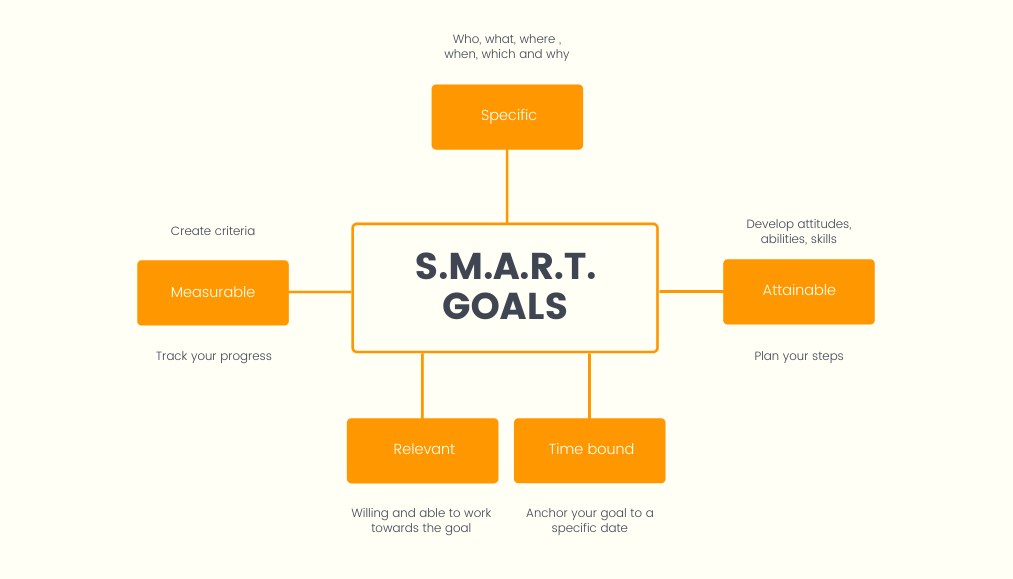
By precisely identifying your priorities, you can tailor your time management strategy to address specific challenges and capitalize on opportunities.
Measurable goals enable you to track progress and evaluate the effectiveness of your time management initiatives.
Utilizing extra time to set goals ensures that you establish realistic and achievable objectives, contributing to a more focused and streamlined approach.
Having a proactive approach ensures that your plan aligns with your organizational vision, fostering efficiency and purposeful utilization of time resources.
The most important tasks are highlighted and prioritized within your time management framework, allowing for a more targeted and strategic allocation of time.
2. Assess Your Current Situation
Take a moment to evaluate your daily routine, identifying productive and unproductive patterns.
Reflect on your priorities, goals, and the tasks that demand your attention.
Consider your time on various activities and whether they align with your objectives.
A full-fledged reflective analysis will help you pinpoint areas of improvement and recognize time-wasting habits.
Understanding your current time utilization lays the groundwork for a tailored time management plan.
3. Develop A Plan
Developing a concrete strategy is the next crucial step in creating a time management plan.
Start by setting clear and achievable goals, both short-term and long-term.
Break these goals into smaller, manageable tasks to make them less overwhelming.
Prioritize these tasks based on urgency and importance, using techniques like the Eisenhower Matrix.

Create a daily or weekly schedule that accommodates your goals and tasks, allowing flexibility to handle unexpected challenges.
Utilize tools like calendars, planners, or time management apps to organize and track your activities.
Establish realistic timeframes for each task and include breaks to avoid burnout.
Regularly review and adjust your plan as needed, adapting to changes in priorities or unforeseen circumstances.
4. Implement The Plan
During the implementation phase, it’s crucial to stay adaptable.
Be open to adjusting your plan as needed and responding to unforeseen challenges or shifts in priorities.
Emphasize consistency in following your schedule, and leverage productivity techniques such as the Pomodoro Technique or Time Blocking to enhance focus.

Once you’ve thoroughly developed your time management plan, its implementation is essential.
Put your strategy into action with commitment and discipline.
Begin by adhering to the schedule you’ve set, ensuring that each task receives your allocated dedicated time.
Embrace a proactive mindset, tackling high-priority items first to maximize productivity.
Regularly assess your progress against the outlined goals, celebrate achievements, and reassess any unmet targets.
5. Evaluate and Adjust as Needed
Regularly evaluate your progress and be ready to adjust your plan as needed.
Reflect on what’s working well and what might require modification.
Assess whether your initial time allocations align with each task’s actual time demands.
Consider external factors that could impact your schedule and be flexible in adapting to changing circumstances.
If certain strategies are more effective, incorporate those lessons into your plan.
Stay attuned to your energy levels throughout the day and adjust your task priorities accordingly.
6. Stay Focused and Motivated
Once you’ve outlined your plan, cultivate a mindset that promotes sustained concentration and enthusiasm.
Clearly define your overarching goals and remind yourself of the benefits that efficient time management can bring, reinforcing your motivation.
Eliminate distractions as much as possible, creating a conducive work environment that fosters concentration.
Break down larger tasks into smaller, more manageable steps, making it easier to stay engaged.
7. Celebrate Your Successes
Recognizing your achievements, no matter how small, provides motivation and reinforces positive habits.
Reflect on milestones you’ve reached, tasks completed, and goals accomplished.
Celebrating successes boosts your confidence and fosters a sense of accomplishment, encouraging continued dedication to your time management plan.
Whether meeting deadlines, improving productivity, or maintaining a consistent schedule, each accomplishment contributes to your overall success.
Celebrating your successes creates a positive feedback loop that strengthens your commitment to effective time management, ensuring a fulfilling and sustainable approach to your daily tasks.
Ready to give Buddy Punch a try?
For free trial, no credit card required.
What Are The Benefits Of a Time Management Plan?
The following are the benefits of having a time management plan.
1. Increased Productivity
An effective time management plan offers numerous benefits, with increased productivity as a key advantage.
By strategically allocating your time, you optimize efficiency and streamline your workflow.
The results are more tasks accomplished in a shorter time span, maximizing your output.

With a structured plan, you’re better equipped to prioritize tasks based on importance and deadlines.
A focused approach minimizes procrastination and helps you stay on track, avoiding the pitfalls of time-wasting activities.
Additionally, improved productivity often leads to a sense of accomplishment and reduced stress, fostering a positive work environment.
2. Improved Satisfaction
Efficiently managing your time allows you to accomplish tasks in a structured manner, leading to a greater sense of fulfillment and achievement.
By prioritizing and organizing your responsibilities, you gain a clearer perspective on your daily activities, reducing the likelihood of feeling overwhelmed.
A well-executed time management plan empowers you to balance work and personal life, fostering a more satisfying lifestyle.
Achieving your goals within established timeframes boosts self-esteem and confidence, contributing to a positive outlook.
The heightened satisfaction gained from a proper time management plan extends beyond professional accomplishments, influencing your overall well-being and creating a positive ripple effect in various aspects of your life.
3. Better Organization
A well-structured time management plan brings the invaluable benefit of a better organization to both professional and personal space.
By allocating specific time slots for tasks and setting clear priorities, you create a systematic framework for your daily activities.
Organization minimizes conflicting demands and helps maintain a focused and orderly workflow.
You can systematically tackle tasks with a detailed plan, reducing the likelihood of overlooking important responsibilities.
Tools like calendars, planners, and task management apps become integral to this organizational strategy, ensuring that deadlines and goals are met.
The result is a more streamlined and efficient approach to your daily routine, increasing productivity and reducing stress.
4. Less Stress
Implementing a time management plan can significantly alleviate stress in your daily life.
By carefully organizing and prioritizing tasks, you gain a clear roadmap for your activities, reducing the sense of chaos and overwhelm.

Knowing exactly what needs to be done and having a structured schedule helps avoid last-minute rushes and tight deadlines.
Effective time management allows for the efficient allocation of resources, preventing the accumulation of tasks and the burden of unfinished work.
As you successfully meet deadlines and accomplish goals, a sense of accomplishment replaces the anxiety associated with procrastination or disorganization.
Moreover, the proactive approach encouraged by a time management plan empowers you to handle unexpected challenges more adeptly.
The result is a calmer, more controlled work environment, fostering a healthier work-life balance and reducing stress levels.
5. Improved Work Life Balance
Time management plan brings about a tangible work life balance improvement.
You create a harmonious integration of professional and personal life by strategically organizing and allocating time for work-related tasks and personal activities.
The balance ensures that work demands do not infringe upon valuable personal time and vice versa.
Effective time management allows you to prioritize tasks, set realistic goals, and establish boundaries, preventing work from becoming an all-consuming aspect of your life.
The benefits extend beyond professional success, creating room for meaningful relationships, self-care, and leisure activities.
Striking an improved work/life balance through a thoughtful time management plan ultimately leads to a more satisfying and sustainable lifestyle.
6. Satisfaction With Life
Implementing a comprehensive time management plan contributes significantly to overall life satisfaction.
Individuals can balance work, personal pursuits, and leisure by efficiently allocating time to various responsibilities and activities.
A balanced lifestyle fosters a sense of accomplishment as goals are met, and tasks are completed in a structured manner.
An organized schedule reduces stress and anxiety associated with time-related pressures, allowing individuals to enjoy a more relaxed and fulfilling daily life.
Making time for hobbies, family, and personal interests enhances the overall quality of life.
Furthermore, the sense of control and productivity that comes with effective time management adds to one’s contentment and overall satisfaction, creating a positive impact that extends beyond professional achievements to encompass a well-rounded and gratifying lifestyle.
7. More Free Time
One of the key benefits of implementing a robust time management plan is the liberation of more free time.
By strategically organizing tasks and setting priorities, you can accomplish your goals more efficiently, leaving room for more free time.
A well-thought-out plan enables you to identify and eliminate time-wasting activities, allowing you to allocate spare moments to activities you truly enjoy.
Streamlining your schedule creates pockets of free time dedicated to relaxation, hobbies, or spending quality moments with family and friends.
The surplus of free time enhances work-life balance and contributes to overall well-being, allowing individuals to rejuvenate, recharge, and enjoy a more fulfilling and rewarding lifestyle.
A thoughtful time management plan ultimately empowers you to make the most of your time, reclaiming moments for activities that bring joy and satisfaction.
Try Buddy Punch For Free
What 5 Techniques Make An Effective Time Management Plan?
Following are the top five effective time management techniques.
1. Create a Daily Planner
The creation of a daily planner is the cornerstone for organizing your day, providing a visual roadmap for tasks and priorities.
Begin by listing all the personal and professional tasks you must accomplish and assigning realistic timeframes to each.
Utilize categories or color-coding to distinguish between different types of activities, making it easier to identify and prioritize them.
Regularly update the planner as priorities shift, ensuring it remains a dynamic and reliable guide.
Incorporate breaks to avoid burnout and enhance productivity.
A well-constructed daily planner helps you stay organized and allows for a quick assessment of your day at a glance.
2. Practice Time Blocking
By implementing the time blocking method, individuals can gain control over their schedules and boost productivity.
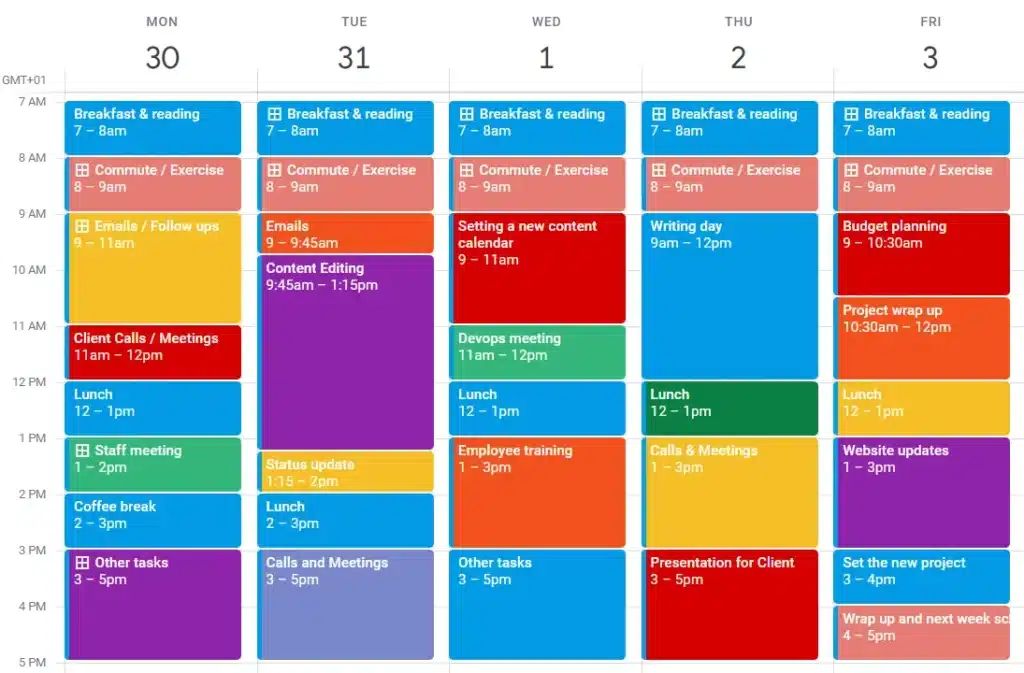
It involves dividing your day into blocks dedicated to different tasks or activities, aligning with various aspects of time management such as setting deadlines, task lists, and daily schedules.
To get started, identify your priorities and categorize tasks based on their nature or urgency.
This step incorporates elements like priority tasks, complex tasks, and urgent tasks into your planning process.
Once you have a clear understanding of your responsibilities, assign specific time blocks to each task.
Practicing this approach not only integrates the concept of time management tools but also emphasizes the importance of project management in handling long-term goals.
Adhering to the time blocking method means committing to working solely on the assigned task during each block.
Having this sort of dedication minimizes distractions and enhances concentration, directly addressing poor time management habits.
Furthermore, the structured approach of time blocking provides a visual representation of your daily activities, aiding in better managing due dates and ensuring a more balanced distribution of responsibilities.
Incorporating the time blocking method into your routine not only streamlines your daily schedule but also contributes to meeting long-term goals.
It serves as an excellent tool for individuals looking to improve their time management skills, navigate complex tasks efficiently, and cultivate a proactive approach to meeting deadlines.
3. Learn To Say No
While it’s natural to want to accommodate various requests, understanding your limitations is crucial for focusing on priorities.
Politely declining tasks or commitments that don’t align with your goals allows you to preserve valuable time for essential activities.
Saying “NO!” empowers you to set boundaries and guard against overcommitting, reducing the risk of spreading yourself too thin.
The technique of saying no lets you prioritize tasks aligned with your objectives, enhancing productivity and preventing burnout.
Embracing the power of no is a strategic move toward a more streamlined and purposeful time management plan, ensuring that your time and energy are directed toward tasks that truly matter.
4. Stop Multitasking
Contrary to popular belief, juggling multiple tasks simultaneously can hinder productivity rather than enhance it.
Focusing on one task simultaneously allows for deeper concentration and higher-quality output.
By eliminating multitasking, you create a more organized and efficient workflow.
Assign specific time blocks to individual tasks, dedicating your full attention to each.
Adopting this approach improves the accuracy and quality of your work and reduces the mental strain associated with constant task-switching.
Embrace a singular focus on the task at hand, and you’ll find that your productivity increases while the stress of managing multiple things simultaneously diminishes.
It’s a transformative technique that enhances the overall effectiveness of your time management plan, fostering a more deliberate and concentrated approach to your daily activities.
5. Master The 80-20 Rule
The 80-20 rule, also known as the Pareto Principle posits that roughly 80% of results come from 20% of efforts.
Apply this concept by identifying and prioritizing the tasks that contribute the most to your goals, focusing on the critical few rather than the trivial many.
Analyze your daily responsibilities and allocate time and energy to the tasks with the greatest impact.
Concentrating on high-priority activities enhances overall productivity and achieves significant outcomes.
Following this technique encourages a strategic approach to time management, ensuring that most of your efforts are channeled into the most influential tasks, ultimately leading to greater efficiency and success in both professional and personal endeavors.
Try Buddy Punch for Free
Ready to start a free trial?
No credit card required, all features included.
If you feel that Buddy Punch might be the right fit for your business, sign up for a 14-day free trial (no credit card needed). You can also book a one-on-one demo or view a pre-recorded demo video.
Final Thoughts,
In conclusion, an effective time management plan is an investment in productivity, well-being, and personal growth.
Incorporating time management tips can significantly enhance your ability to make the most out of each day.
Short breaks, for instance, may seem counterintuitive at first, but studies show that they can rejuvenate your mind, leading to increased focus and overall efficiency.
Set deadlines act as powerful motivators, creating a sense of urgency that propels you to complete tasks promptly.
By implementing an action plan, you provide yourself with a roadmap, ensuring that each step you take aligns with your goals.
Remember, wasted time is an irreplaceable resource, and being mindful of how you allocate it is crucial for success.